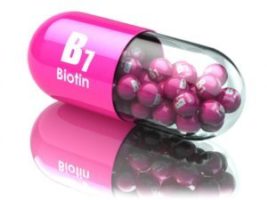Vitamin A is a group of unsaturated organic compounds (retinol, retinoic acid, and some provitamin A) that is fat-soluble and also Heat stable so it can’t destroy by cooking. Vitamin found in vegetables in form of carotene, Carotene also has known as provitamin A. Provitamin A convert in retinol in the mucosa of the small intestine. Provitamin A acts as an antioxidant vitamin because it destroys the free radicals present in our bodies. It has many functions such as growth and development, essential for normal vision, and protects from epithelial cancer. It can also be made in a laboratory. This is also found in animal sources like meats, fish, poultry, milk, and dairy products.
Sources of vitamin A
Found in both sources animals and plants. In animal sources, it found in form of retinol, and in-plant sources, it found in form of Beta-carotine.
Plant sources-
Biotin Vitamin B7-Function, Sources & Deficiency
Dark green leafy vegetables, yellow and orange fruits vegetable esp. carrot, pumpkin, zucchini sweet potatoes, and a green vegetable like broccoli and spinach, tomatoes, mango, apricots, peaches, etc.
Animal sources-
The best sources of vit. A is Cod liver oil, Eggs, Fortified breakfast cereals, Butter, Fortified skim milk, Milk and dairy products, meats, and poultry.
Vit. A can also be made in laboratory.
Characteristics of vitamin A-
Retinol is a fat-soluble and heat-stable vitamin, so it can’t be destroyed by cooking. Our body can store Retinol in the liver and our body uses this for 6 to 9 months but the body can not eliminate Retinol in urine so it may reach a toxic level. This is necessary for our eyesight. It appears in the retina of the eye in some components called retinoids.
Functions of vitamin A-
Vitamins List Classification and Types
Retinol helps to
Vitamin A deficiency disease-
- Night blindness-
Night blindness is a condition making it difficult to see in relatively low light and night. It’s first clinical symptom is the deficiency of Retinol. - Bitot’s spot-
Triangular, pearly-white or yellowish, foamy spots on the conjunctiva. - Conjunctival xerosis-
The dryness of conjunctiva is the first clinical sign of Retinol deficiency. - Corneal xerosis-
It is a serious condition in its cornea becomes dryness of cornea. - Keratomalacia-
liquefication of the cornea or excessive softening of thecornea called keratomalacia.
Vitamin A Overdose –
Pantothenic acid Vitamin B5 Rich Foods & Supplements
A fat-soluble vitamin so it can’t be eliminated by the kidney, it can store in fatty tissue. consuming a large amount of Retinol can cause some health problems like- Acute Hypervitaminosis A, Chronic Hypervitaminosis A, may be acute or chronic.
Acute Hypervitaminosis A
Irritable Mood.
Dizziness.
Abdominal pain.
Sleepiness.
Loss of appetite.
Visual disturbances.
Chronic Hypervitaminosis A
Jaundice.
Mouth ulcers.
Respiratory infection.
Dizziness, confusion.
Loss of hair or alopecia.
Peeling, oily or itching skin.
Cracked skin or fingernails.
Cracked skin at the corners of the mouth.
Bone abnormalities and joint pain.
An excess intake during pregnancy can increase the risk of fetal abnormalities developing.
Read Also
Vitamin B1 Thiamine Function & Deficiency disease
Riboflavin Vitamin B2 Vegan Foods And Deficiency
Post Basic BSc Nursing Entrance Exam Question Papers pdf
Thanks For Reading. If you have any questions please feel free to mail us. Our mail address is placed on the header section of our Website.








